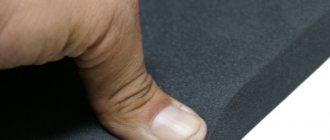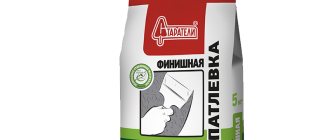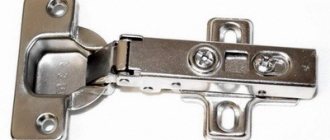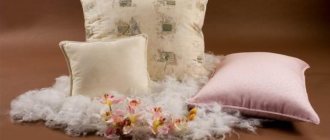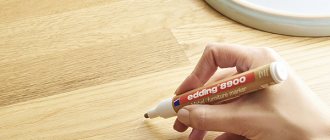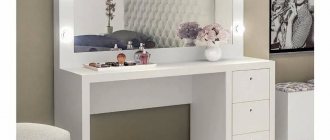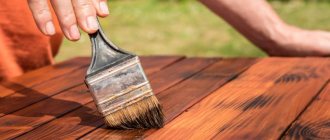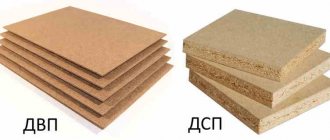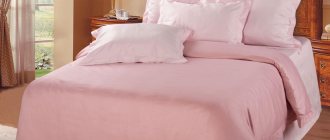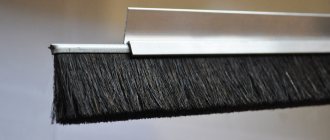Foam rubber is used in furniture production, as insulation, for door upholstery, packaging, etc. What characteristics of this material do you need to know about? What properties does it have? How to apply in a specific situation? We will deal with all these questions in the article.
The technical name of foam rubber is polyurethane foam (or PPU for short). It may differ in a number of parameters. The properties of polyurethane foam are determined by the following mechanical and physical indicators:
- Density;
- Rigidity;
- Breaking strength;
- Residual deformation;
- Air permeability;
- Elasticity;
- Relative elongation;
- Cell size;
- Comfort;
- Reference coefficient.
The last two parameters apply to highly elastic foam rubber.
These characteristics determine the range of application of a particular type of foam rubber in a particular production. That is, how convenient it will be to use polyurethane foam when creating certain furniture.
To understand this issue, let's consider the key parameters of polyurethane foam.
Production of foam rubber
Polyurethane foam is 90% air; its production process consists of mixing certain components, a chemical reaction between which leads to foaming and hardening of the material.
Chemical production requires attention and strict adherence to technology. Before mixing, the components for the production of polyurethane foam are checked for qualitative and quantitative indicators. In a foaming machine, the components are mixed, the process of foam formation and maturation occurs without the direct participation of the operator.
The polyurethane foam mass is poured into molds; in the case of continuous production, it is placed on a conveyor belt, where the chemical reaction is completed. The time for complete hardening is about 3 days.
The process of cutting foam rubber is carried out on special machines. Cutting form: from simple cubes of different sizes to complex shapes and profiles.
Waste-free foam rubber production is ensured by installations for fine cutting (crushing) of waste.
Scope of application
Polyurethane foam is quite common and is used in various areas of production:
- furniture;
- construction (sound and heat insulation);
- sports (mats, punching bags);
- medical (orthopedic products);
- sewing soft toys and clothes.
Foam rubber differs depending on the purpose in quality and price category. Durability, density, hardness and elasticity depend on the composition.
Main parameters of PPU:
1. Density. An important indicator that largely determines the remaining characteristics of the finished product: rigidity, wear resistance, and the ability to restore its original shape. Indicates the amount of material (kg) contained in one cubic meter.
2. Stiffness (compressive stress). This is the amount of force required to compress the foam by 40%, measured in kPa.
3. Permanent deformation. Characterizes the ability of a product to maintain its shape and size. The sample, compressed by 50%, is kept at the established humidity and temperature, and the deviation from the original shape is measured after the external influence has ceased. Increasing the density reduces the amount of permanent deformation.
The above indicators, along with elasticity, strength, support and comfort coefficients, determine the types and brands of polyurethane foam.
Features of upholstery of upholstered furniture
The internal filling of upholstered furniture is chosen taking into account the main purpose of the sofa. So, to use a sofa as a permanent sleeping place, choose a harder filling, and vice versa, for furniture used for sitting, choose more comfortable soft fillings.
To achieve optimal product comfort, furniture manufacturers often use multi-layer filling for sofas and mattresses. In this case, the bottom layer is foam rubber with a high support coefficient, and the top layer has a high comfort coefficient.
PPU brands
Polyurethane foam is marked with a series of Latin letters and numbers, the letters indicate the type of material, the numbers indicate density (kg/m3) and hardness (kPa).
- "ST" - standard. The basic brand is the only one that is produced on the basis of one basic polyol. The density indicator of a material determines its rigidity.
- "HL" - hard, "EL" - increased rigidity. It has a high load-bearing capacity, its structure allows it to withstand higher loads than standard brands.
- "HS" - soft and ultra-soft. The brand determines the most plastic of all types of polyurethane foam. Surface softness provides the greatest comfort to products made on its basis.
- HR" - highly elastic. It combines low initial stiffness and high load-bearing capacity, which makes it especially comfortable.
- "LR" - soft, viscoelastic. Characterized by increased viscosity and a “memory” effect. Capable of distributing the load over the entire plane. It is also called thermoplastic.
- "RTC" - reticulated polyurethane foam. Special treatment destroys the thin membrane, as a result, closed cells are transformed into open ones, and the porosity of the material increases significantly.
- Secondary foam rubber. This is the case when recycled waste is transformed into a new type, characterized by high quality indicators. It is characterized by high density, excellent insulating ability, open pores and cavities between large inclusions absorb sound waves almost completely.
New developments are constantly increasing the number of varieties of this synthetic material.
Selection rules
Before choosing a filler for upholstered furniture, it is important to decide what kind of product it is. If foam rubber is selected for a sofa, pay attention to the markings with density indicators from 28 kg per cubic meter and higher. If you purchase less dense material, there is a risk that the sofa will not last long.
Use the following recommendations when selecting:
- check the thickness of the foam; for upholstered furniture it should be at least 3 cm;
- find out about the rigidity and elasticity of raw materials: a stiffer option is suitable for seats than for filling headrests or armrests;
- some types of foam rubber do not hold their shape at all, which indicates their low quality, so check this criterion in the store to make sure the reliability of future furniture;
- ask what additives were used in the production of raw materials to prevent allergies to certain substances, especially when it comes to children's furniture.
Pay attention to the markings; they will help tell you a lot of information about the chosen foam rubber. You should not save on filler, because high-quality material is the key to a long service life of furniture.
PPU release form
The market offers a wide variety of forms, types, brands of polyurethane foam:
1. Leaf.
Manufacturers supply rectangular foam rubber with a thickness of 5 to 1000 mm in standard cuts, or according to individual customer requirements.
2. Rolled.
Reels of various widths are convenient to use, material thickness up to 30 mm. In addition to the usual, manufacturers offer rolled foam rubber made on a backing made of fabric or synthetic materials.
3. Block.
This type of foam rubber is distinguished by a hard, non-porous surface (before processing). In addition to cubic ones, this type of foam rubber is poured into molds of various configurations. After cooling, the crust is removed, the material acquires a homogeneous structure.
4. Acoustic.
They are supplied in the form of separate panels of two types: with relief and without relief. The panels have different shapes, colors, and sizes. In addition to its own properties, a significant increase in the sound absorption coefficient is ensured by the shape of the surface. For more information about acoustic foam rubber, read the article - Acoustic foam rubber: types, installation, sound insulation, price
3. RIGHTS OF THE SUBJECT OF PERSONAL DATA
3.1 Consent of the subject of personal data to the processing of his personal data
The subject of personal data decides to provide his personal data and consents to their processing freely, of his own free will and in his own interest. Consent to the processing of personal data can be given by the subject of personal data or his representative in any form that allows confirmation of the fact of its receipt, unless otherwise provided by federal law.
The obligation to provide evidence of obtaining the consent of the subject of personal data to the processing of his personal data or proof of the existence of the grounds specified in Federal Law-152 rests with the Operator.
3.2 Rights of the subject of personal data
The subject of personal data has the right to receive from the Operator information regarding the processing of his personal data, unless such right is limited in accordance with federal laws. The subject of personal data has the right to demand from the Operator clarification of his personal data, blocking or destruction of it if the personal data is incomplete, outdated, inaccurate, illegally obtained or is not necessary for the stated purpose of processing, as well as take measures provided by law to protect his rights .
Processing of personal data for the purpose of promoting goods, works, and services on the market by making direct contacts with potential consumers using means of communication, as well as for the purposes of political propaganda, is permitted only with the prior consent of the subject of personal data. The specified processing of personal data is considered to be carried out without the prior consent of the subject of personal data, unless the Company proves that such consent has been obtained.
The operator is obliged to immediately stop, at the request of the personal data subject, the processing of his personal data for the above purposes.
It is prohibited to make decisions based solely on automated processing of personal data that give rise to legal consequences in relation to the subject of personal data or otherwise affect his rights and legitimate interests, except in cases provided for by federal laws, or with the written consent of the subject of personal data.
If the subject of personal data believes that the Operator is processing his personal data in violation of the requirements of Federal Law-152 or otherwise violates his rights and freedoms, the subject of personal data has the right to appeal the actions or inaction of the Operator to the Authorized Body for the Protection of the Rights of Personal Data Subjects or in court .
The subject of personal data has the right to protect his rights and legitimate interests, including compensation for losses and (or) compensation for moral damage in court.
Cutting polyurethane foam
A soft, elastic material with small cells, foam rubber causes certain difficulties when it is necessary to give it a given shape. In industry, until recently, cutting presses were used. The creation of a shaped matrix, necessary for this type of processing, influenced the increase in the cost of the final product.
Currently, CNC laser machines are widely used. New devices significantly expand the use of polyurethane foam due to the ability to cut products of complex configurations without a significant increase in labor intensity. Laser cutting is performed silently, quickly, and no solid waste is generated during the cutting process.
Possible harm of foam mattresses
Recently, the opinion has spread that foam rubber is harmful to health because the material emits harmful fumes. Despite the use of polyurethane foam for several decades, debate about the advisability of its use does not subside.
It is known that foam rubber is made from completely synthetic components. As a result, substances with a characteristic odor are released. But they quickly disappear and do not cause harm to the body.
However, brands produced in violation of technology and the most budget ones often continue to emit an odor throughout their entire service life. The vapors are compared to the substance released during combustion. But their concentration is so low that there is no need to talk about harm to humans.
Varieties
Sheet and roll foam rubber differ in softness and hardness. Products are:
- Soft - this type of filler can be used in furniture only in combination with a dense foam base. This is the most plastic polyurethane foam (PPU), giving increased comfort to finished products. But it should be remembered that when using the material independently, the load created cannot exceed 60 kg.
- Hard - hard, capable of withstanding heavy loads up to 100 kg.
- Increased hardness - highly rigid polyurethane foam can withstand a weight of over 100 kg.
- Elastic with increased comfort - foam rubber is best suited for upholstered furniture intended for sleeping. You can rest most comfortably on such a surface.
- Elastic with an orthopedic effect - the products are characterized by healing properties, as they reduce the load on all parts of the body.
Foam rubber with an orthopedic effect is “adapted” to each person individually, the main thing is to select the material for the consumer’s weight category.
Recycling
Due to the varied chemical composition of polyurethanes, it is difficult to process foams using a single method. Reusing board foams for carpet backing is where most recycling occurs. This method involves grinding scrap and gluing small flakes together into sheets. Other methods include breaking the foam into granules and dispersing them into a polyol mixture to mold into the same part as the original. The foam recycling process is still evolving, and we hope that new and easier recycling methods will emerge in the future.[7]
